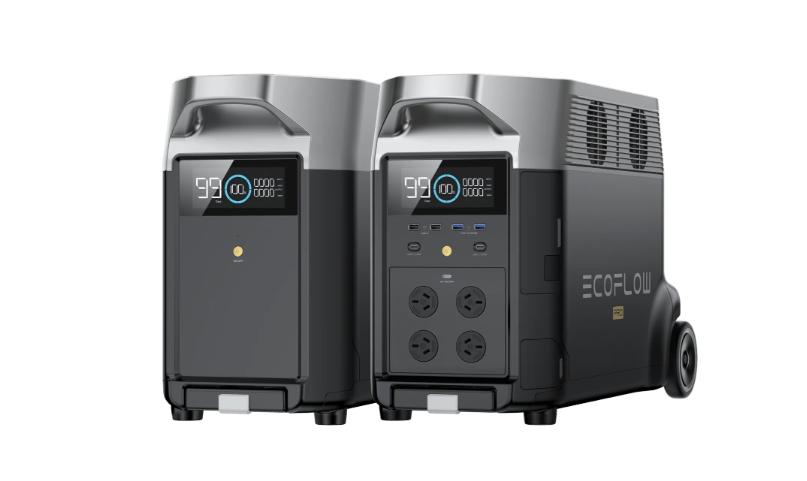Gold Coast Storm Chaos: Guide to Be Prepared
Gold Coast storm occurrences wreak havoc all around. Recently, Ex-Cyclone Alfred's strong winds and unrelenting rain cut power to hundreds of thousands of houses. The devastation of such hurricanes has deeply impacted the lives of Gold Coast residents. To prepare your home and protect your family, this article offers ways to get updated information on upcoming storms and how to prep for them.
How Does Storm Damage Gold Coast?
A Gold Coast storm usually brings more than just rain. These weather occurrences can cause great disturbances all around the area. Strong winds bring down trees and powerlines, obstructing roads and turning off power. Heavy rain causes flash floods that destroy houses, sweep away roads, and endanger life.
Beachfront regions are particularly vulnerable since waves and strong tides can erode the coast, threaten buildings, and generate hazardous circumstances. Public transport is halted, companies and schools close, and emergency services are overworked. For both visitors and residents, storm damage Gold Coast storms can disrupt their lives.
Recent evidence of how terrible these storms can be is ex-Cyclone Alfred. Though it lost strength before landfall, the system nonetheless wreaked great destruction. Carving 4- to 6-meter cliffs into the Gold Coast's sandy beaches, the storm drove local governments to start quick restoration work. More than 300,000 companies and households were in dark for long periods. Eroding six million cubic meters of sand, the cyclone created long-term worries about coastline stability and tourism.
Where Can I Find Up-to-Date Storm Alerts for the Gold Coast?
Residents' safety starts with storm warning Gold Coast notifications from reliable sources. These trustworthy resources keep you informed of upcoming weather crises.
City of Gold Coast Disaster and Emergency Dashboard: Specific to the Gold Coast region, this system offers real-time notifications on weather warnings, power outages, and road closures. Residents can also sign up for alerts on possibly hazardous events as bushfires and floods.
Bureau of Meteorology (BOM): The BOM provides thorough warnings and weather predictions for Queensland, including the Gold Coast area. Their site features information on extreme weather conditions that is updated often.
Queensland Disaster Management: This page offers thorough coverage of cyclone, flood, and severe weather alerts all around Queensland. It also offers tools for preparation and emergency notifications.
How Can I Prepare for the Gold Coast Storm?
Here’s a complete guide to ensure you're storm-ready:
1. Create a Household Emergency Plan
A solid emergency plan helps your family stay safe and respond quickly during crises.Know the Risks: Identify potential hazards like floods, cyclones, and electrical storms, which are common in Queensland.
Communication Plan: List emergency contacts and teach children how to call 000.
Utilities Check: Ensure everyone knows how to safely turn off electricity, gas, and water.
2. Build a Robust Emergency Kit
Prepare a well-stocked kit that includes:
Bottled water, canned goods, and essential medications.
First aid kit, flashlights, and a battery-powered radio for weather updates.
Copies of important documents in a waterproof folder.
Cash, phone chargers, hygiene supplies—and don’t forget your pets' needs!
In light of frequent power outages on the Gold Coast, having a backup energy source is wise. Consider investing in an EcoFlow DELTA Pro Portable Power Station, which provides reliable off-grid power for critical devices.


3. Strengthen Your Home Against Storms
Roof & Gutter Maintenance: Check for damage, secure loose tiles, and clear debris from gutters.
Secure Outdoors: Tie down or bring in outdoor furniture and toys.
Tree Management: Trim overhanging branches that could fall during high winds.
Flood Protection: Use sandbags if you live in a flood-prone area and review the Gold Coast flood risk maps.
If you rely on renewable energy, now’s the time to protect solar panels from hail storm damage. Use hail netting, shields, or specialized protective coatings to minimize risk and extend their lifespan.
4. Prepare for Electrical Storms & Power Cuts
Electrical Safety: Install surge protectors to guard devices during electrical storms.
Emergency Generator: A fuel-powered emergency generator for house backup can run essential appliances like fridges, lighting, and medical equipment.
You can also consider using backup power for home to ensure that essential devices can continue to operate when the power grid fails.


5. Stay Informed in Real Time
Local Alerts: Subscribe to Gold Coast Alerts for real-time weather and emergency updates.
Media Updates: Tune into ABC Radio or follow trusted online weather sources.
City Dashboard: Monitor current alerts and warnings from the Gold Coast City Dashboard.
6. Don’t Forget Your Pets
Pack a pet emergency kit with food, medications, and bedding.
Plan for pet-friendly accommodations if evacuation becomes necessary.
7. After the Storm
Wait for the All-Clear: Only go outside when authorities declare it safe.
Inspect Cautiously: Check your home for structural damage or electrical hazards.
Call for Help: Contact the SES (13 25 00) for assistance if you have serious damage.
Learn more about home safety preparation for electrical storms to minimize risks and safeguard your home’s energy systems—especially against hail storm damage. These proactive steps will make your household significantly more resilient amid severe weather events and the increasing trend of power outages gold coast occurences.
How to Stay Safe During a Gold Coast Storm?
Gold Coast storms can develop fast, causing severe gusts, flash floods, and hazardous surf. Below are simple precautions to keep you safe during these storms.
Stay inside until absolutely necessary. High winds bring flying debris and fallen trees that are quite dangerous.
Charge power banks, torches, and phones ahead of time. Remaining connected lets you get notifications and reach emergency services should you require.
Never walk or drive across floodwaters. Shallow water can even knock you off your feet or wash away automobiles.
Keep informed via the Bureau of Meteorology or the City of Gold Coast Dashboard. These sites provide real-time alerts on local risks.
Bring in or anchor outdoor objects like garden tools, furniture, or anything that could turn into a missile in high winds.
If officials tell you to evacuate, do it immediately. Delaying only puts you and rescuers at greater risk.
What Should I Do After a Storm in the Gold Coast?
After the storm, remaining alert and taking the initiative will help guarantee your safety. Hazards including flooding, unstable trees, and downed powerlines are still present after the storm. Below are what you should do after a storm.
Check your house for structural damage. Stay away from broken powerlines or flooded electrical systems and notify emergency services immediately of any hazards.
Avoid flooded roads, drains, and creeks. These can conceal hazardous currents, sinkholes, or debris.
Use generators or chainsaws only if you know how to run them safely. Because of carbon monoxide dangers, never operate fuel-powered machinery indoors.
For insurance claims, take photographs and videos of any damage for documenting purposes. Save receipts for temporary lodging and emergency repairs.
Check up with senior neighbours or those living alone if it is safe. During healing, community support is quite important.
Conclusion
A Gold Coast storm can hit quickly, causing major damage and disturbance. Reducing the dangers is done by advance preparation with power backup and an emergency plan. Protecting lives and property depends on remaining alert throughout the storm. The correct knowledge and equipment will help you to withstand any Gold Coast storm more confidently.
FAQs
When is the Gold Coast storm season?
The Gold Coast storm season runs from October to March, bringing a heightened risk of tropical storms. During this time, residents are encouraged to stay informed by regularly checking official sources like the Bureau of Meteorology and Queensland Disaster Management. It's also wise to prepare early—assemble emergency kits and ensure power backup systems are in place as soon as a storm alert is issued.
What are the signs of an approaching storm?
Indicators of an impending storm include unexpected darkening of the sky, high gusty winds, a temperature drop, and rising humidity. You might also see lightning in the distance or hear thunder. Clear signs are rapid weather changes or authoritative source alerts. When these indicators show up, always look for shelter.
How can I stay informed during a storm?
Keep an eye on the City of Gold Coast Disaster and Emergency Dashboard, the Bureau of Meteorology, and local news sources to stay updated during a storm. For live alerts and warnings, use weather apps. Should power loss occur, keep a battery-operated radio close by. If available in your region, register for emergency alerts or SMS updates.